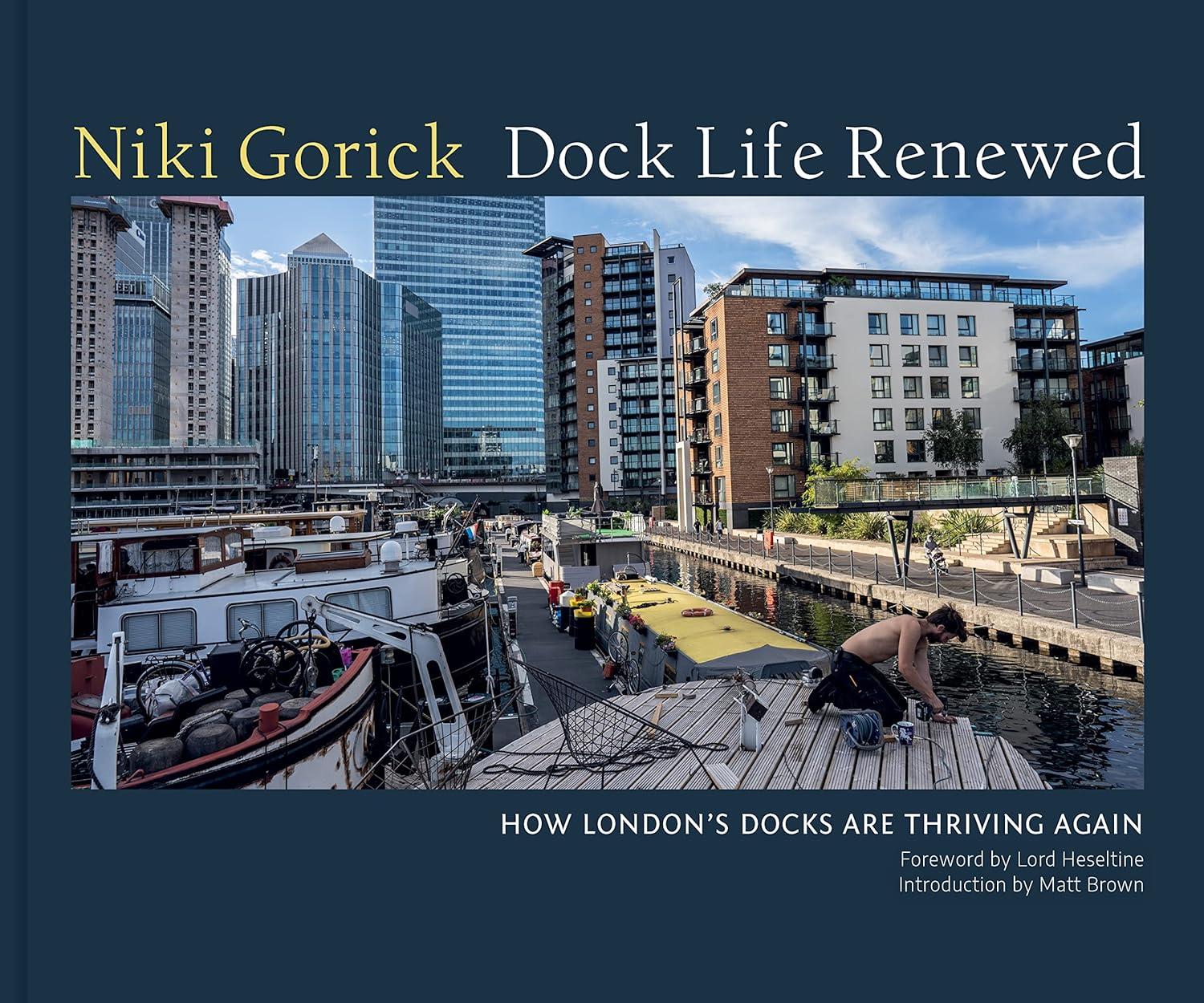Post
Top ten summer in the City books to read 2024
16 Jul 2024
On your holidays and need some suggestions of great books to dive into? Here are the London Society’s top ten suggestions of books to browse while enjoying sultry summer days and nights.
1. Atlas of Never Built Architecture
By Sam Lubell and Greg Goldin, Phaidon
The description of the Atlas of Never Built Architecture, from Sam Lubell and Greg Goldin, promises that this book is a comprehensive survey of unbuilt projects and it certainly does cover every continent, with projects spanning the 20th and 21st centuries. Featuring mile-high towers and floating islands, the proposals of the past seem to eclipse the wildest ideas from today. It might be no bad thing that some of the hubris in global architecture has quelled in recent years, particularly when you start to calculate the carbon cost of gigantic projects and their impact on our fragile environment.
2. Look Here - On the Pleasures of Observing the City
Ana Kinsella takes the reader on a stroll across London observing its buildings, people and seasons as the walks frame moments in time, revisit memories and form new ones. With some of the book set amid the Covid-19 pandemic, it also captures the very strange time when central London was empty; when it felt like someone had pressed pause, yet only a couple of miles either side some neighbourhoods thrived and parks became the centre of outdoor life.
3. Londoners Making London : Transforming Neighbourhoods
By Jan Kattein
Jan Kattein's aim is laudable – to show that local, committed, community-based action in a seemingly anonymous city can bring about serious change and growth – both personal and wider. Take the case of African Street Style in Hackney. After the 2012 Olympics Jeffrey Lennon saw the need for local community to engage in their local neighbourhood. In 2013 African Street Style – a modest street party took place on Calvert Avenue. The site was significant – part of the Boundary Estate the earliest social housing development by the London County Council in 1890.
4. PROPERTY – the Myth that Built the World
By Rowan Moore
Government after government have failed to reach housing targets. It is this scenario that Moore explores in the last section of the book, What Else Could There Be? Examining more modern notions of the ‘commons’ in new towns such as Milton Keynes, cooperative developments in New York and Vienna, as well as Britain’s council housing programme, Moore demonstrates that even within this status quo there are examples, which offer alternative ways of living – to differing degrees of success.
5. The City of Today is a Dying Thing
By Des Fitzgerald
He takes the unusual stance of being “against green cities”, which might make him sound anti-tree or anti-nature but it’s not quite that simple. Fitzgerald, professor of medical humanities and social sciences, instead chooses to explore the roots (pun intended) of the green city movement and uncover why people became fixated on living close to nature while denouncing the social decay of the metropolis.
6. Saving the People's Forest - Open spaces, enclosure and popular protest in mid-Victorian London
By Mark Gorman
There are no statues or monuments erected to the memory of the men and women who campaigned to save Epping Forest, the ancient hunting ground crouching at the eastern edges of our capital city. Saving the People’s Forest is a book which tells the story of how, without the efforts and determination of a group of ordinary men and women in the 19th century, Epping Forest would be something only remembered in old maps and history books.
7. London's Railway Stations
By Oliver Green
Constructed within the 60 years of the railway boom, companies competed to provide fittingly grand architecture (Marylebone and Fenchurch Street excepted) for the traveller's arrival in the metropolis. The author lays out the development of this giving an idea of the rush and grand ambitions of the railway kings.
8. Contesting Public Spaces: Social Lives of Urban Redevelopment in London
By Ed Wall
Contesting Public Spaces considers the changes which have taken place in three London locations - Paddington Basin, Trafalgar Square and Elephant & Castle (Market) - as a result of large scale regeneration.
Get priority booking on events - join The London Society
The three locations place public space in very different environments both in their geography and construction. At Elephant & Castle in south London, an existing area has been demolished and rebuilt; over in west London, Paddington Basin, adjacent to Paddington station went from being industrial land on the periphery of central London to a newly built canal side neighbourhood while Trafalgar Square, famous globally and considered to be London’s civic square transitioned to a managed event space.
9. Dock Life Renewed: How London’s Docks are Thriving Again
By Niki Gorick
Sometimes you are given something so beautiful that words will not do justice to the work. Niki Gorick’s photographic book illustrates the rich mix of personalities and activities in St Katherine Docks, the Surrey Docks and the Isle of Dogs. This is not a historical book, but more a celebration of an area that has been regenerated, retaining a lot of its working heritage. This book examines through photography how these former pools of industry have been co-opted for new purposes and pastimes. The Foreword by Lord Heseltine notes that some changes would even surprise the London Docklands Development Corporation whose job was to put life back into these docks.
10. London of the Future
Contributors include: Anna Minton, Roma Agrawal, Baroness Lawrence, Professor Tony Travers, Hugh Pearman, Indy Johar, Jude Kelly, Mark Brearley, Carolyn Steel, Sarah Ichioka, Peter Murray, Yasmin Jones-Henry, Mark Stevenson, Claire Bennie, Kat Hanna, Gillian Darley, Smith Mordak, Neal Shasore and Grafton Architects.
London of the Future book addresses many important questions: How will we need to adapt to climate change? Will we become a techno-utopia, with Londoners’ lives in perfect harmony with artificial intelligence? How do we achieve a London that is fair and equitable for everyone?


